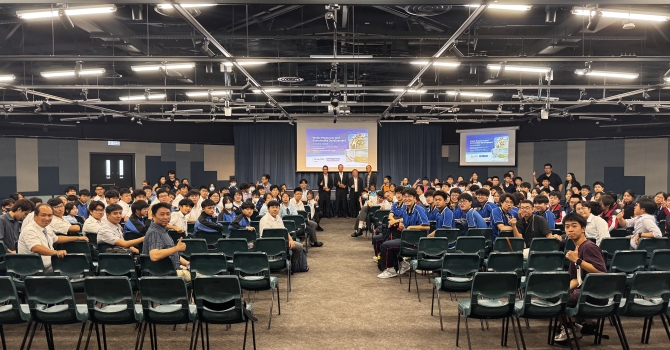The Cooling Tower Project: Promoting Circularity of Water in A Hong Kong University
Away from the Atrium, a central cooling plant lies on the roof of the second floor near Lift 3.
Global warming has become more evident than ever - with the rise of seawater temperature - causing a domino effect on the environment. The cooling tower project was borne as an initiative to combat the increased energy use of the existing seawater cooling plant.
The cooling tower plays a critical role in HKUST's central campus air conditioning system. It is a device to consume fresh water for air conditioning under the process of evaporative cooling, in which ambient air is in contact with falling water, thereby exchanging heat. While part of the water is being evaporated, the remaining cooled water will travel down to the pores lining outside of the tower, where filtration takes place to separate impurities from the fresh water.
To adhere to the code of practice by the Electrical and Mechanical Services Department (EMSD), the condensing water is required to be continuously bled off to maintain the concentration of total dissolved solids and suspended solids at an acceptable level. In such a case, the cooling towers bleed off at the university library to supply water for toilet flushing.
The condensate from the air handling units (AHUs) inside the library building is also collected and pumped to the cooling tower. The designed daily volume of water saving is 5.865m3.
Connected to the cooling tower is the water makeup system to replenish fresh water in the circuit.
For the cooling tower project, a number of 4 cooling towers each with about 4900kW heat rejection capacity have been installed at the library roof for the main campus air conditioning system. The total cooling tower bleed-off water volume was 8724 m3 in 2022, while the average reuse rate for toilet flushing is 0.784L/s.


